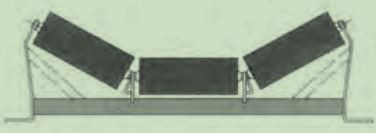 Afrikaans
Afrikaans  Albanian
Albanian  Amharic
Amharic  Arabic
Arabic  Armenian
Armenian  Azerbaijani
Azerbaijani  Basque
Basque  Belarusian
Belarusian  Bengali
Bengali  Bosnian
Bosnian  Bulgarian
Bulgarian  Catalan
Catalan  Cebuano
Cebuano  Corsican
Corsican  Croatian
Croatian  Czech
Czech  Danish
Danish  Dutch
Dutch  English
English  Esperanto
Esperanto  Estonian
Estonian  Finnish
Finnish  French
French  Frisian
Frisian  Galician
Galician  Georgian
Georgian  German
German  Greek
Greek  Gujarati
Gujarati  Haitian Creole
Haitian Creole  hausa
hausa  hawaiian
hawaiian  Hebrew
Hebrew  Hindi
Hindi  Miao
Miao  Hungarian
Hungarian  Icelandic
Icelandic  igbo
igbo  Indonesian
Indonesian  irish
irish  Italian
Italian  Japanese
Japanese  Javanese
Javanese  Kannada
Kannada  kazakh
kazakh  Khmer
Khmer  Rwandese
Rwandese  Korean
Korean  Kurdish
Kurdish  Kyrgyz
Kyrgyz  Lao
Lao  Latin
Latin  Latvian
Latvian  Lithuanian
Lithuanian  Luxembourgish
Luxembourgish  Macedonian
Macedonian  Malgashi
Malgashi  Malay
Malay  Malayalam
Malayalam  Maltese
Maltese  Maori
Maori  Marathi
Marathi  Mongolian
Mongolian  Myanmar
Myanmar  Nepali
Nepali  Norwegian
Norwegian  Norwegian
Norwegian  Occitan
Occitan  Pashto
Pashto  Persian
Persian  Polish
Polish  Portuguese
Portuguese  Punjabi
Punjabi  Romanian
Romanian  Russian
Russian  Samoan
Samoan  Scottish Gaelic
Scottish Gaelic  Serbian
Serbian  Sesotho
Sesotho  Shona
Shona  Sindhi
Sindhi  Sinhala
Sinhala  Slovak
Slovak  Slovenian
Slovenian  Somali
Somali  Spanish
Spanish  Sundanese
Sundanese  Swahili
Swahili  Swedish
Swedish  Tagalog
Tagalog  Tajik
Tajik  Tamil
Tamil  Tatar
Tatar  Telugu
Telugu  Thai
Thai  Turkish
Turkish  Turkmen
Turkmen  Ukrainian
Ukrainian  Urdu
Urdu  Uighur
Uighur  Uzbek
Uzbek  Vietnamese
Vietnamese  Welsh
Welsh  Bantu
Bantu  Yiddish
Yiddish  Yoruba
Yoruba  Zulu
Zulu conveyor belt scraper
Understanding Conveyor Belt Scrapers The Unsung Heroes of Material Handling
In the realm of material handling and processing, conveyor systems have become indispensable assets for industries ranging from mining to food production. While most attention tends to focus on the conveyor belts themselves, one critical component often overlooked is the conveyor belt scraper. This simple yet vital device plays an essential role in ensuring the efficiency and longevity of conveyor systems.
What is a Conveyor Belt Scraper?
A conveyor belt scraper, sometimes referred to as a belt cleaner, is a mechanical device that is installed alongside the conveyor belt to remove material that adheres to the belt's surface. These materials can include dirt, dust, or residual product, which can accumulate on the belt during operation. Without a scraper, this buildup can lead to a variety of issues, including reduced efficiency, increased wear on the belt, and contamination of the product being transported.
Importance of Conveyor Belt Scrapers
1. Enhanced Efficiency The primary function of a conveyor belt scraper is to maintain the cleanliness of the belt. A clean belt ensures that material is transported smoothly and efficiently, reducing friction and energy consumption. When the scraper effectively removes excess material, the system can operate at optimal performance levels.
2. Cost Savings Regular maintenance of conveyor systems can lead to significant cost savings over time. When scrapers reduce the build-up of material on the belt, they help prevent premature wear and tear on the belt itself and other components of the conveyor system. This can lead to fewer repairs and replacements, thus saving money for the operator.
3. Improved Product Quality For industries handling bulk materials—like food processing, pharmaceuticals, and chemical manufacturing—product contamination can be a major concern. Scrapers play a crucial role in ensuring that no residual material contaminates the new loads on the conveyor belt. This is particularly vital in food processing, where cleanliness is paramount to meet health and safety regulations.
conveyor belt scraper

4. Safety Enhancement A clean conveyor belt is also a safer one. Excess material can create slip hazards for workers and lead to equipment malfunctions. By ensuring that the belt is free from build-up, scrapers contribute to a safer working environment.
Types of Conveyor Belt Scrapers
There are various types of conveyor belt scrapers designed to meet the needs of different applications. Some of the most common include
- Primary Scrapers Installed at the discharge end of the conveyor belt, primary scrapers are designed to remove large amounts of material that may have accumulated during transport.
- Secondary Scrapers These scrapers provide an additional cleaning action after the primary scraper has done its job, ensuring that any remaining residue is removed before the belt returns to its loading position.
- Pre-Cleaners Positioned before the discharge end, pre-cleaners are intended to eliminate initial build-up, thereby enhancing the overall efficiency of the cleaning operation.
Conclusion
In summary, conveyor belt scrapers are essential components that support the functionality and efficiency of conveyor systems. By focusing on maintaining a clean belt, these devices not only improve operational efficiency and product quality but also contribute to cost savings and workplace safety. As industries continue to evolve in their material handling practices, the role of the conveyor belt scraper will undoubtedly remain crucial. By investing in high-quality scrapers and ensuring their regular maintenance, companies can optimize their operations and safeguard their investments in conveyor technology.
-
Revolutionizing Conveyor Reliability with Advanced Rubber Lagging PulleysNewsJul.22,2025
-
Powering Precision and Durability with Expert Manufacturers of Conveyor ComponentsNewsJul.22,2025
-
Optimizing Conveyor Systems with Advanced Conveyor AccessoriesNewsJul.22,2025
-
Maximize Conveyor Efficiency with Quality Conveyor Idler PulleysNewsJul.22,2025
-
Future-Proof Your Conveyor System with High-Performance Polyurethane RollerNewsJul.22,2025
-
Driving Efficiency Forward with Quality Idlers and RollersNewsJul.22,2025





























